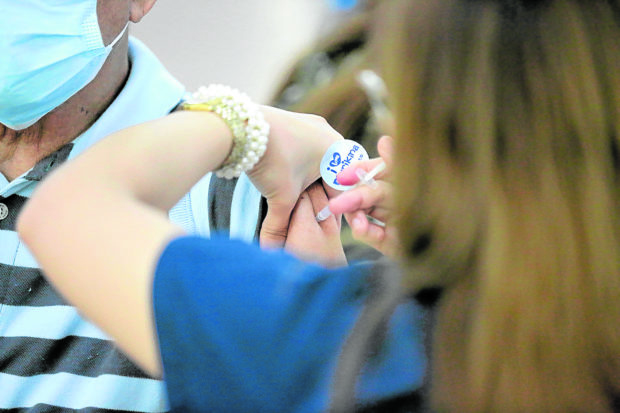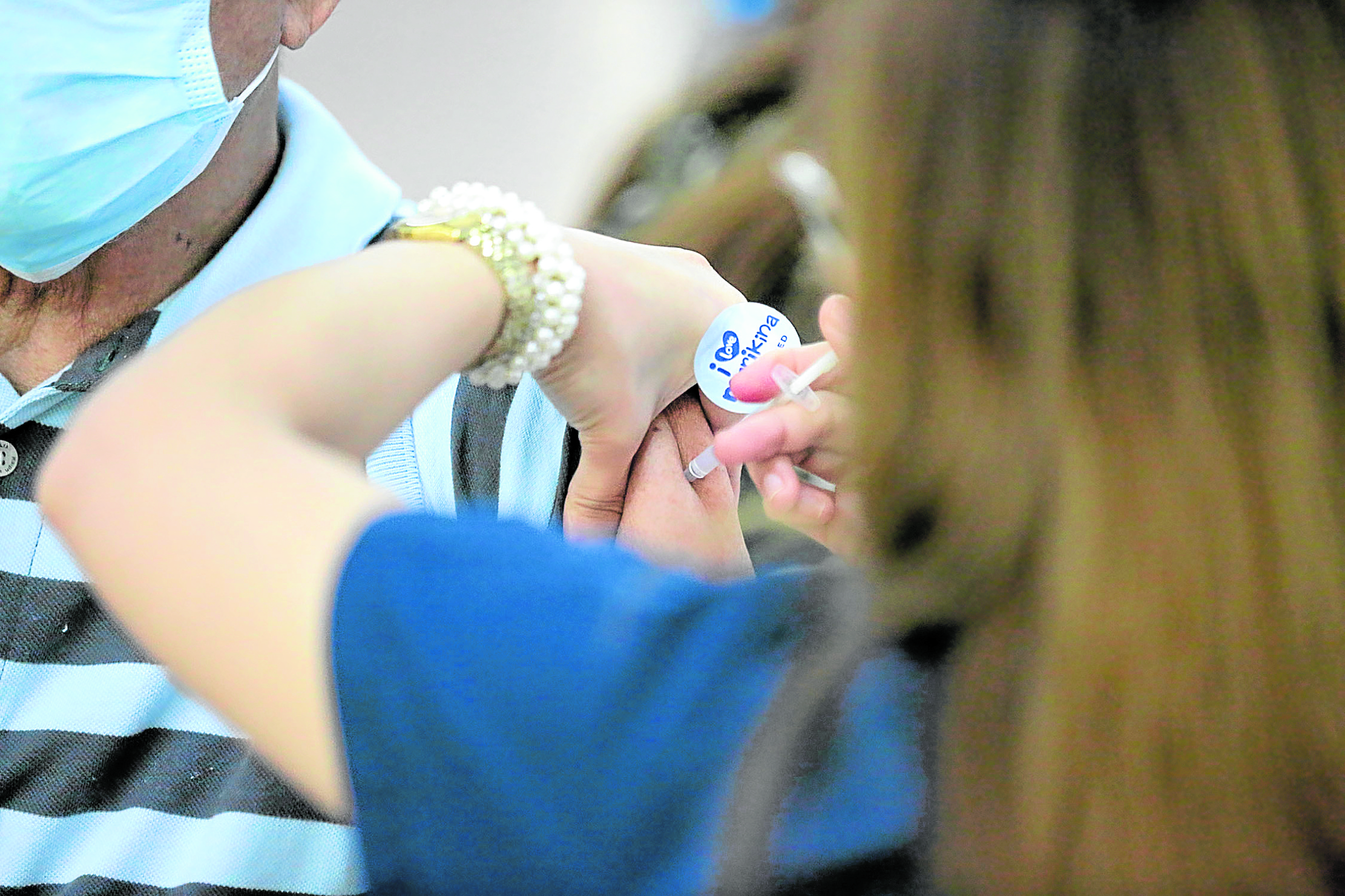(First of two parts)
Retired Supreme Court Justice Vicente V. Mendoza texted me a rejoinder to our column last week about the myth of declining overall mental function in seniors. He said: “Hi Doc Raffy, you’re right. Life really begins at 70 or thereabout because I myself am experiencing life just now. The physical strength may start declining but the mind becomes even more creative after 70. That is clear in Psalm 90:10, (which says) ‘The days of our years are three score years and 10: and if by reason of strength they be four score years, yet is their strength, labor and sorrow: for it is soon cut off, and we fly away.’”
He added that in the judiciary, the mandatory retirement age is 70 years, which seems to be well in line with the “three scores and 10 years” mentioned in Psalm 90:10. But as Justice Vic says, he felt like life has just begun at that age.
Justice Vic must be in his late 80s now, but he’s still very active, physically and mentally. He’s one of my favorite reactors to our commentaries in this column. He doesn’t agree all the time, but his objective remarks always make us aware of areas that we could be blindsided about. He’s truly a wellspring of knowledge and wisdom.
Manoy Greg
Justice Vic always reminds me of our dear eldest brother, Manoy Greg, who was his classmate in law school. Manoy Greg and Justice Vic excelled in law school and in their postgraduate masteral courses abroad, and became successful in their respective careers. I still remember that old picture we had in our living room when I was just a small boy, wherein Justice Vic and classmates carried Manoy on their shoulders when they heard the news of Manoy’s topping that year’s bar exams.
When Manoy died at a young age of 59, our family lost a pillar. We’re grateful that the law firm he had founded still carries his name (Castillo, Laman, Tan, Pantaleon and San Jose Law Firm), and is a constant reminder of what a blessing Manoy was to our family and a lot of people whose lives he had touched.
If Manoy were alive today, I’m sure he would still be as mentally sharp as Justice Vic is.
Manoy’s son, Gregson (son of Greg), is a senior partner in the law firm now, and he has been my adviser for whatever legal concerns I have, personally and for our group, especially when we were still publishing health magazines. His way of systematic thinking and reasoning is very much like his dad’s. From time to time, he reminds me of my legal responsibilities as a practicing physician, administrator, editor and publisher, and as a health columnist, too. That certainly helps keep me out of trouble.
Troublesome problem
Speaking of trouble, I was invited recently in a medical huddle that discussed the troublesome problem of vaccine-related injuries and long COVID. Teta Villaba of the Post-Pandemic Med Help (PPMH), a volunteer group of doctors and other health-care professionals helping patients with serious adverse reactions from anti-COVID-19 vaccines, moderated the highly interactive discussion, which included out-of-the-box thinkers like former health undersecretary Dr. Jade del Mundo and an icon of family medicine in the country, Dr. Edward Tordesillas.
Dr. Jade, who’s an eye specialist, shared that vaccine-injury victims can present with visual symptoms like squinting and double vision. Changes in the retina of the eyes, which can only be detected by using a simple device to look into the inside of the eyes through the pupils, may corroborate the other findings in the patients that may point to a recently administered vaccine as the culprit. This procedure is called funduscopy, which can be done in a few minutes. Even ordinary physicians can do it, but I’d rather have the ophthalmologists (eye specialists) do it, since there can be nuances and other subtle findings which only years of training can accurately detect.

The group of experts in the huddle agreed that there must be a close temporal relationship (usually within three to four weeks) between vaccination and the development of signs or symptoms. However, some serious side effects may occur late; hence, they’re not attributed to the vaccine anymore.
Some of the doctors in the virtual meeting shared cases of their patients who were previously healthy and developed signs and symptoms of heart failure a few weeks after vaccination. Of course, the patients’ identities or anything that could identify them were withheld by the doctors. Everyone was well aware of the data privacy law. Only the clinical presentation and how they were treated were discussed.
We compared notes on how we treat suspected cases of vaccine injury or those with persistent symptoms. Most of the participants use a combination of medicines that include melatonin, ivermectin, low-dose aspirin, and other anti-inflammatory vitamins and supplements like vitamin D3, vitamin C, zinc, quercetin, curcumin and omega-3 fatty acids.
A participant in the huddle suggested that for those who can’t afford to buy these supplements, plants and herbs may be tried like ginger, garlic, turmeric and black pepper. Dr. Jade mentioned that the Philippine Institute of Traditional and Alternative Health Care (pitahc.gov.ph), of which he is a former chair, has done studies on various indigenous plants and herbs, and found some of them effective.
Sparse data
Although the scientific data is still sparse, most of the participants believe that these vitamins and supplements, including well-studied herbs, may also be taken to help prevent serious and sustained inflammation-related vaccine side effects, which may be due to an inappropriately excessive immune system reaction. We postulated that this could be the reason some side effects like myocarditis with or without pericarditis (swelling of the heart muscle and its covering) are relatively common in young individuals, and much less in incidence in older adults and the elderly.
We shared that we have observed in the cases referred to our clinic that the first indication that one’s heart may be affected is an increase in the heart rate. A healthy heart should not have a resting heart rate more than 80 beats per minute (bpm). If one’s heart rate at rest is consistently more than 90 bpm, especially if accompanied already by shortness of breath, easy fatigability, waking up at night with a drowning sensation (paroxysmal nocturnal dyspnea), then one has to consult a physician already to find out if there’s something wrong with one’s heart.
Early recognition and treatment of myocarditis and pericarditis could be life-saving because some of those with this condition can be prone to develop life-threatening arrhythmia (abnormal heartbeats) that could lead to sudden cardiac death.
There is an unmistakable increase in the past year of sudden or unexpected deaths, which is defined as death within 24 hours from the onset of symptoms. Hundreds of obviously healthy adult athletes have been reported to have just collapsed while playing their sports or during practice, and some of them didn’t even know what hit them. They may die on the spot, or before they could reach the hospital. Some are fortunate to have been revived successfully and survive the cardiac arrest, but they may no longer be considered physically fit to resume their athletic careers.
Next week, we’ll discuss some of the risk factors and warning signs of healthy adults who may be prone to develop sudden cardiac death; and long-COVID syndrome which is usually due to a COVID infection, but which some local experts believe could also be caused by vaccination. INQ(To be continued)













































